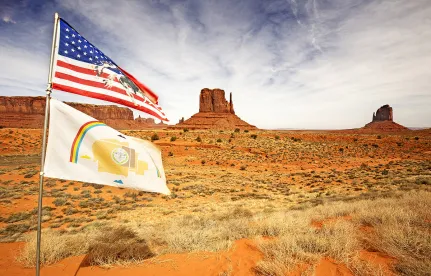General Overview
On May 5, 2022, the Board of Governors of the Federal Reserve System, the Federal Deposit Insurance Corporation, and the Office of the Comptroller of the Currency jointly released a Notice of Proposed Rulemaking (NPR) to revise the regulations implementing the Community Reinvestment Act of 1977 (CRA). Generally, the NPR proposes to update how CRA activities qualify for consideration, where CRA activities are considered, and how CRA activities are evaluated. The last major interagency revisions to the CRA regulations were in 1995.
The NPR seeks to update the CRA regulations pursuant to the following objectives: (a) update CRA regulations to strengthen the achievement of the core purpose of the statute; (b) adapt to changes in the banking industry, including the expanded role of mobile and online banking; (c) provide greater clarity and consistency in the application of the CRA regulations; (d) tailor performance standards to account for differences in bank size, business models and local conditions; (e) tailor data collection and reporting requirements and use existing data whenever possible; (f) promote transparency and public engagement; (g) confirm that CRA and fair lending responsibilities are mutually reinforcing; and (h) create a consistent regulatory approach that applies to banks regulated by all three agencies.
Amendments to Revitalization and Stabilization Activities: Place-Based Definitions
Among other amendments, the NPR aims to redefine revitalization and stabilization activities under the CRA. The agencies propose to replace the current revitalization and stabilization activities component of the community development definitions with six new categories of activities. The new categories of definitions aim to provide more clarity on the types of eligible activities, and to better tailor the types of activities that qualify in different targeted geographies. Each of the categories focuses on place-based activities that benefit residents of targeted geographic areas, including: (1) revitalization; (2) essential community facilities; (3) essential community infrastructure; (4) recovery activities in designated disaster areas; (5) disaster preparedness and climate resiliency activities; and (6) qualifying activities in Native Land Areas. These definitions are referred to collectively in the NPR as place-based definitions.
The six proposed place-based definitions share four common elements. First, each definition has a geographic focus such as low- or moderate-income (LMI) census tracts, where the activities must occur. Second, each definition has standardized eligibility criteria that require the activity to benefit local residents, including LMI residents, of the targeted geographies. Third, each definition has the eligibility requirement that the activity must not displace or exclude LMI residents in the targeted geography. Finally, each definition provides that the activity must be conducted in conjunction with a government plan, program, or initiative that includes an explicit focus on benefitting the targeted geography. The agencies state that these four common elements are intended to provide clarity regarding the activities that may qualify for CRA credit, while maintaining sufficient flexibility. In addition, these four common elements are intended to ensure a strong connection between activities and community needs.
New Place-Based Definition: Native Land Areas
Specifically, in response to significant and unique community development challenges that exist in tribal communities, the agencies propose a new definition of qualifying activities in “Native Land Areas.” The NPR defines “Native Land Areas” to include the following geographic areas: Indian country; land held in trust by the United States for Native Americans; state American Indian reservations; Alaska Native villages; Hawaiian Home Lands; Alaska Native Village Statistical Areas; Oklahoma Tribal Statistical Areas; Tribal Designated Statistical Areas; American Indian Joint-Use Areas; and state-designated Tribal Statistical Areas. Eligible activities within Native Land Areas include: (a) community development activities related to revitalization; (b) essential community facilities; (c) essential community infrastructure; and (d) disaster preparedness and climate resiliency.
According to the NPR, essential community facilities, eligible community infrastructure, and disaster preparedness and climate resiliency activities in Native Land Areas would need to benefit or serve residents, including LMI residents of Native Land Areas, without displacing or excluding LMI residents. In addition, these activities would need to be conducted in conjunction with a federal, state, local, or tribal government plan, program, or initiative that benefits or serves residents of Native Land Areas. The agencies note that in addition to the place-based community development activities the NPR describes, other community development activities (i.e., affordable housing or economic development) could also qualify for consideration in Native Land Areas provided they otherwise meet the eligibility standards for that particular activity.
In addition, the agencies propose that revitalization activities in Native Land Areas must have a specific focus on LMI individuals. Specifically, the agencies propose that under the definition of Native Land Areas, revitalization activities must benefit or serve residents of Native Land Areas and must include substantial benefits for LMI residents. The agencies stress the importance of establishing a stronger nexus between these activities and the LMI residents who reside in these areas to ensure activities provide community benefit.
What This Means for Indian Country
The current CRA regulations do not include a specific definition for certain community development activities in Native Land Areas. The agencies indicate in the NPR that the inclusion of a specific definition for qualifying activities in Native Land Areas is in response to: (a) stakeholder feedback that supported establishing a clear geographic definition of tribal areas where banks may receive CRA credits for certain qualifying activities; (b) the agencies’ recognition that basic infrastructure in tribal communities (e.g., housing, plumbing, heating, electric, broadband, cellular access) lags far behind the rest of the country; and (c) the significant rates of poverty among Native individuals within Indian Country.
The proposed amendments to the CRA regulations could potentially address these historical challenges and inequities by expanding access to credit, investment, and banking services in Indian Country. Traditionally, banks and financial institutions have either suffered from an insufficient understanding and knowledge of tribal communities or lack of incentive to invest in tribal projects. This generally has resulted in tribal communities missing out on CRA benefits. Clearly stating that banks can receive CRA credits for eligible activities in Native Land Areas would provide an opportunity for banks to increase their lending capacity and financial interactions within Indian Country. Such explicit Native Land Areas CRA credits would incentivize banks to engage in tribal economic development opportunities and provide much-needed capital to critical tribal projects.
Next Steps: Comments to the NPR
With respect to qualifying activities in Native Land Areas, the agencies seek feedback on the following questions:
|
(a) |
|
To what extent is the proposed definition of Native Land Areas inclusive of geographic areas with Native and tribal community development needs? |
|
(b) |
|
In addition to the proposed criteria, should the agencies consider additional eligibility requirements for activities in Native Land Areas to ensure a community development activity benefits LMI residents who reside in Native Land Areas? |
|
(c) |
|
Should the agencies also consider activities in Native Land Areas undertaken in conjunction with tribal association or tribal designee plans, programs, or initiatives, in addition to the proposed criteria to consider activities in conjunction with federal, state, local, or tribal government plans, programs, or initiatives? |
Comments on the NPR are due in early August.




 />i
/>i

